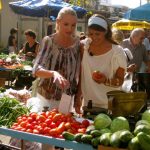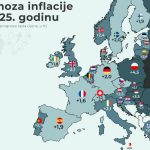December 20, 2019 – A wonderful snapshot of a Quaint, Curious Croatia from National Geographic 1908 – home to the most beautiful market scene in Europe.
So how was life in Croatia more than 100 years ago?
There is sadly not so much documented evidence in English of life as it once was here, but there are some absolute gems out there. Among them is this beautiful National Geographic 1908 featured article by Felix J Koch, which takes in not only the beauty of Croatia, but also its wonderful traditions and traditional dress.
A visit to Agram market (the former name for Zagreb), ‘home to the most beautiful capital of Europe’, the importance of the port of Fiume (Rijeka), and much, much more. Given that we are over 100 years ago, I am pretty sure that there are no longer any copyright issues, but rather than publishing all the pictures here, I decided to link to the full report at the bottom. I also have a PDF of the report if anybody wants (if yes, email me at [email protected], Subject 1908.
And now, let’s go back in time…
This market was the cleanest, fairest, and brightest of all the markets whereof we know, and we have marketed from Hopedale, up in Labrador, to Saloniki on the Aegean… In Holland we found they cleaned things to bring the tourist; here, however, touristy was practically nil.
So one who knows the countrysides can tell at once the girl from Sissek from the vineyard lassie of Somobor, and she can tell you who has come from Ogulin, where the moss grows heavy on the roofs, and who makes her home beside the Plitvica lakes, the summer resort of all Croatia.
Every village had its modifications, and there must have been hundreds of varied costumes here. The entire market, as a result, was a great picture in daintiest colors. From five until eleven in the morning, one could see it. Civilians – that is, Agram folk – mingled to buy. People came too, just to look on. But the costumes were in the great majority. It was the most beautiful market scene in Europe.
Fiume (Rijeka today) has an American interest, in that it is at this port that the tremendous hordes of immigrants from the southeast of Europe embark for America. Vessels especially built for immigrant service take these across at a minimum rate.
Ogulin is another point of interest. The little cottages here have all the charm of a cotter’s life in Scotland. It is cold, very cold, however, at Ogulin, in seasons where the ‘bora’, the cold northeast wind, blows, and so they have thatched the roofs thickly, and on the shingles, the moss grows soft.
At Samobor there is another phase of life. Samobor stands among the vineyards where they raise the grapes for the wine. In many parts of Croatia a glass of wine is far cheaper than drinking water.
But things were not all rosy, and reference was paid to the political tensions of the time.
Even as Hungary is ever fomenting discord, preaching revolt, so in Croatia they are working for separation from Hungary, for Pan-Slavism – anything that will bring independence.
We were told that the powers that be have pretty well curbed liberty in Croatia. Since 1895, it seems, in Croatia no one may form a literary or political organization without permit therefor. One needs to have a permit even to hold a political meeting, and this, with other parties than the reigning one, is withheld at pleasure. Trades of labor unions likewise are under the ban.
You can see the whole report, complete with all the glorious photos, in this link here – highly recommended!









